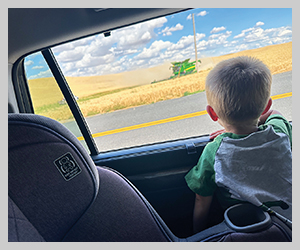Juggling the economic triple play

In baseball, a successful triple play only occurs when the convergence of events is navigated using precision execution. Moving to farm and ranch management, global macroeconomic, geopolitical, fiscal and monetary policies are resulting in the economic triple play. Strategic operations in an agribusiness requires one to simultaneously manage prices, costs and interest rates in a fast-paced, chaotic landscape with a high degree of precision and objective execution. Let’s dig deeper into the realities and actions required to be effective in juggling strategies and actions for a positive bottom line.
Revenue
The first stop is prices and the revenue side of the profit equation. Extreme volatility will be a reality as we approach the quarter-century mark. Many of the strategies developed during the post-commodity super-cycle era, now over one decade ago, are still very applicable. With deglobalization and uncertainty in trade policy, a high priority will be to fine-tune one’s risk management program. With one in five dollars of net farm income generated from trade with other nations, assess their economic health and the value of their currencies compared to the dollar. Global economics must be factored into your decision-making. Geopolitical agendas with a “flip the switch” mentality by leaders can quickly change economic fortunes. This can easily cause emotional, rather than objective, decision-making. Cost of production via enterprise and down to the field level are critical elements of managing the triple play with a positive outcome.
Costs
Moving to the second part of the triple play, costs may be more challenging. Expect inflation of farm input costs to be sticky and much more prolonged than other expenses in the general economy. With nearly 80 percent of farm expenses directly or indirectly related to oil and energy, an input and output marketing plan is critical. Of course, about 60 percent of commercial fertilizer is produced in countries with authoritarian regimes, which places more pressure on inflated costs. Coupled with the always present issues of potential supply chain challenges, your strategic action plan needs to have plans A, B, C and D alternatives. Cost of production and break-even points can move very quickly. A good set of spreadsheets with a wide range of assumptions can provide the metrics to maintain business between the profit and loss guardrails. Crop and other insurance options can be a major player of whether one adds or subtracts earned net worth or retained earnings from the farm balance sheet.
If this is overwhelming, consider outside expertise such as an agronomist, a nutritionist, lender or a consultant to assist in mapping out options. Being independent in the past may have got us here, but in the future, being interdependent and the power of collaboration will get us there.
Interest rates
In less than 12 months, the Federal Reserve has raised interest rates 475 basis points or 4.75%. Higher interest rates come after a decade of relatively flat and, in some cases, declining interest rates. The third part of the triple play will require farmers to examine their debt structure. In the agriculture industry, much of the long-term debt on real estate has been fixed rates on three-, five-, or seven-year interest rate resets, meaning the interest rates will be renegotiated on those anniversary dates. A critical element in the interest rate part of the triple play will be operating loans for inputs, which are often on variable interest rates.
Mitigating interest rate risk requires one to follow the Federal Reserve’s federal funds rate, which drives the prime interest rate. The prime interest rate is approximately 3% over the federal funds rate. Your individual farm business loan rates will be adjusted from these interest rates based on risk and other loan characteristics.
Applying this to your business applications, shock test your enterprise budgets and cash flow with the possibility of a 3, 4 and 5% increase in interest rates on your variable rate operating loans. Then, ascertain your break-even levels with these assumptions as you map out your marketing, risk management and profit plans. A profitability scenario allows one to generate positive earned net worth. If a negative margin was to occur, one must examine your fallback position on your balance sheet, which could be working capital. Current assets minus current liabilities yields working capital, also referred to by a new term: current equity. Maintain 25% of expenses as working capital with the possibility of a drop in prices, inflated costs and higher interest rates in the economic landscape ahead. Working capital is a financial buffer if the elements of the triple play go in a negative direction.
Management intensity through planning, strategizing, executing and monitoring will be the call to order over the next few years. Following the basics with objective decision-making can place the odds in your favor when juggling the economic triple play in the economic environment bestowed upon the agriculture industry.
Dr. David Kohl is an academic hall-of-famer in the College of Agriculture and Life Sciences at Virginia Tech in Blacksburg, Va. Dr. Kohl is a sought-after educator of lenders, producers and stakeholders with his keen insight into the agriculture industry gained through extensive travel, research and involvement in ag businesses. This content was provided by AgWest Farm Credit.












